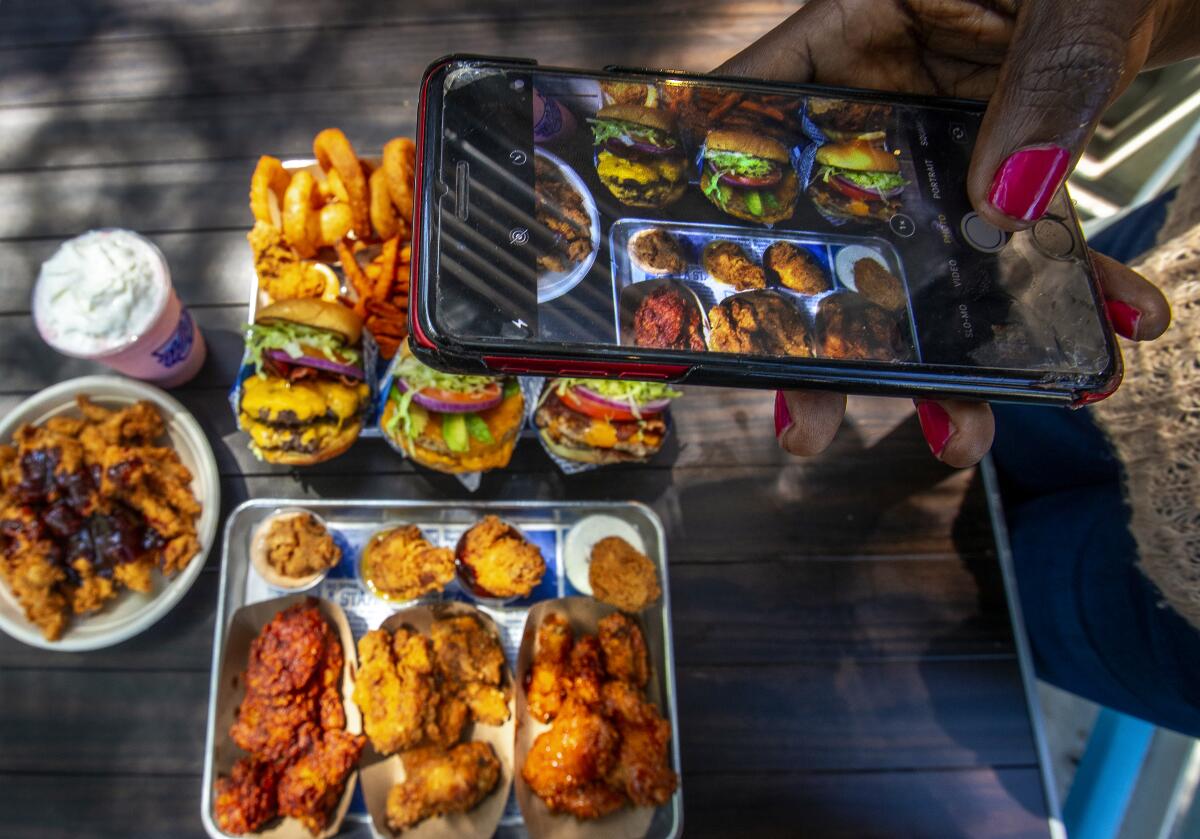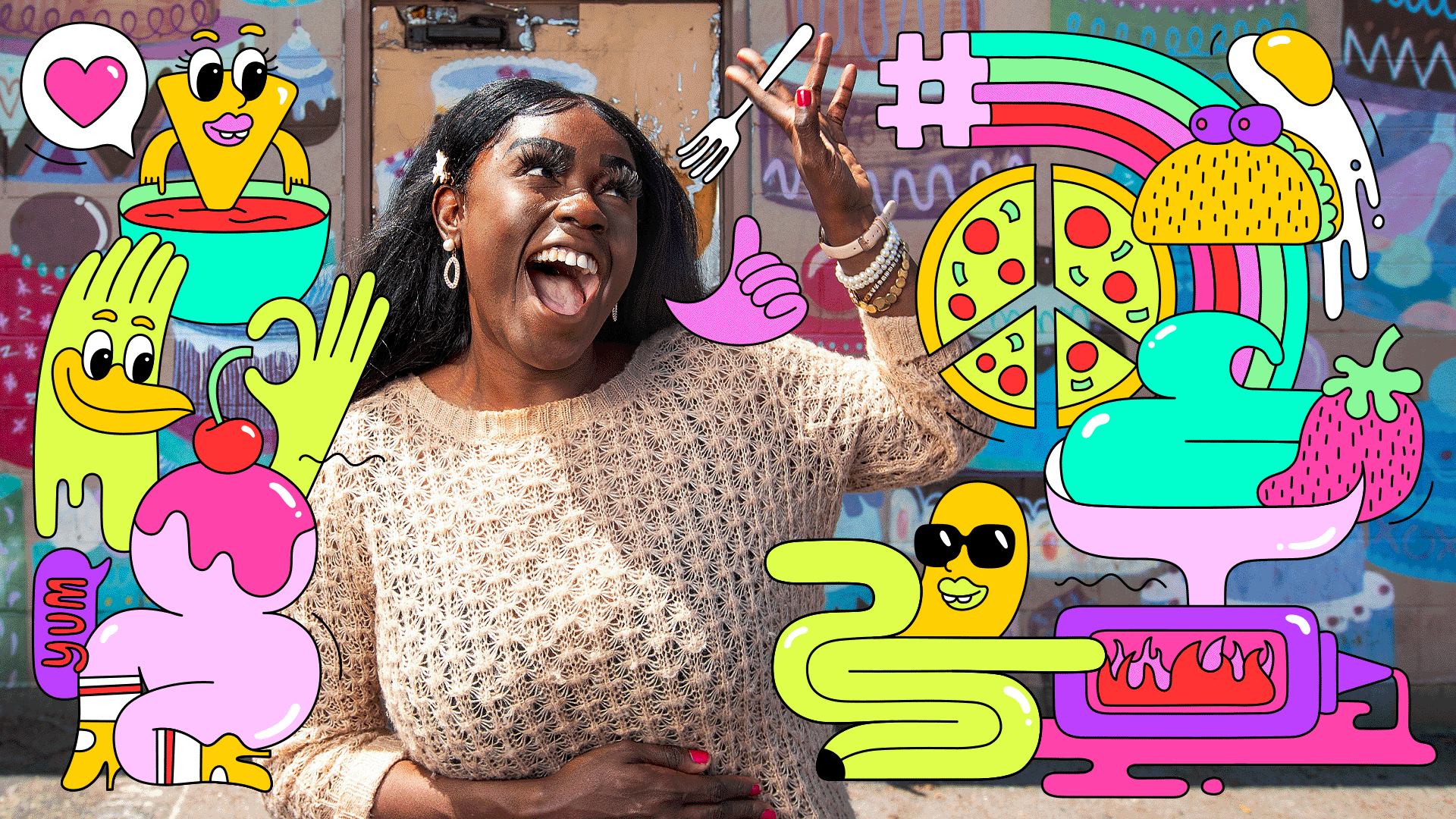What restaurant critics really think about food influencers

- Share via
Andi Berlin has been working in food media for more than two decades. She was the food critic for the Arizona Daily Star for seven years and is the current restaurant critic at the Arizona Republic in Phoenix. She views food influencers as a trend, rather than a threat to her profession.
“We thought Yelp was going to mess up food criticism, but it didn’t,” she says. “As a food critic, I do have to respond to what influencers do, and I do emulate that in a way.”
Taking a cue from the food influencer videos that play Top 40 songs while the phone camera pans tables full of food, Berlin recently started posting more videos on Instagram to accompany her restaurant reviews. One shows her twirling her chopsticks around various noodle dishes while the song “Kiss Me” by Sixpence None the Richer plays in the background and the words “I’m so into Asian pasta” sit in the left-hand corner of the video.
Free food, getting paid to post and hundreds of thousands of social followers. A look into the world of food influencers.
“People don’t really understand the difference between journalists and influencers, and when I’m appearing in videos as if I were an influencer, it can make it more confusing because I look the same on the video: I’m eating food and having fun,” she says.
“But there is a difference.”
For one thing, Berlin never tells a restaurant if she’s coming in. She makes a reservation under a different name and she doesn’t introduce herself to anyone on staff. She pays for her own food (and gets reimbursed by the newspaper) and tries to stay under the radar by taking photos with her phone rather than a camera with any lighting.
“When influencers are out there giving away content for free, it’s a struggle to get paid subscribers who want to fund our journalism,” she says. “But there is no substitute for good journalism.”
(Los Angeles Times restaurant critic Bill Addison also reviews anonymously and the newspaper pays for his meals.)
Craig LaBan, the award-winning critic for the Philadelphia Inquirer, considers himself an influencer of sorts. He’s amassed an Instagram following of more than 36,000.
“My definition of a social media influencer in the modern sense is somebody who is using social media in particular to share their dining experiences with the public,” says LaBan. “If someone has a large enough following, when they say, ‘Oh my God, look at this cheese pull,’ a couple of hundred people … maybe start getting on their scooters and zipping over to that place.”
He looks to specific local influencers in Philadelphia as resources for information on newer businesses and spotlights on neighborhoods he hasn’t visited in a while.
“In its purest form, social media has given a voice to a lot of people who otherwise would have never had access to traditional media accounts without going to journalism school or following a traditional path,” he says. “And it opened my eyes to the fact that during the pandemic, businesses in particular have relied on social media to interact with the world, and they’ve been able to leverage that without any big marketing firms.”
Here’s a guide on how to tell the difference between an L.A. Times journalist and a food influencer.
Like Berlin, LaBan is reimbursed for restaurant meals. He chooses to remain anonymous — all part of an effort to gain and keep the trust of his readers.
“There’s a certain generation that understands that about newspapers, but we are sort of shifting into a generation of young adults who have only known social media,” he says. “We’ve all been challenged to sort of embrace it to some degree and it’s been very influential in the food world, but as consumers, you have to sort of keep your eyes open as to what the content is.”
More to Read
Eat your way across L.A.
Get our weekly Tasting Notes newsletter for reviews, news and more.
You may occasionally receive promotional content from the Los Angeles Times.













